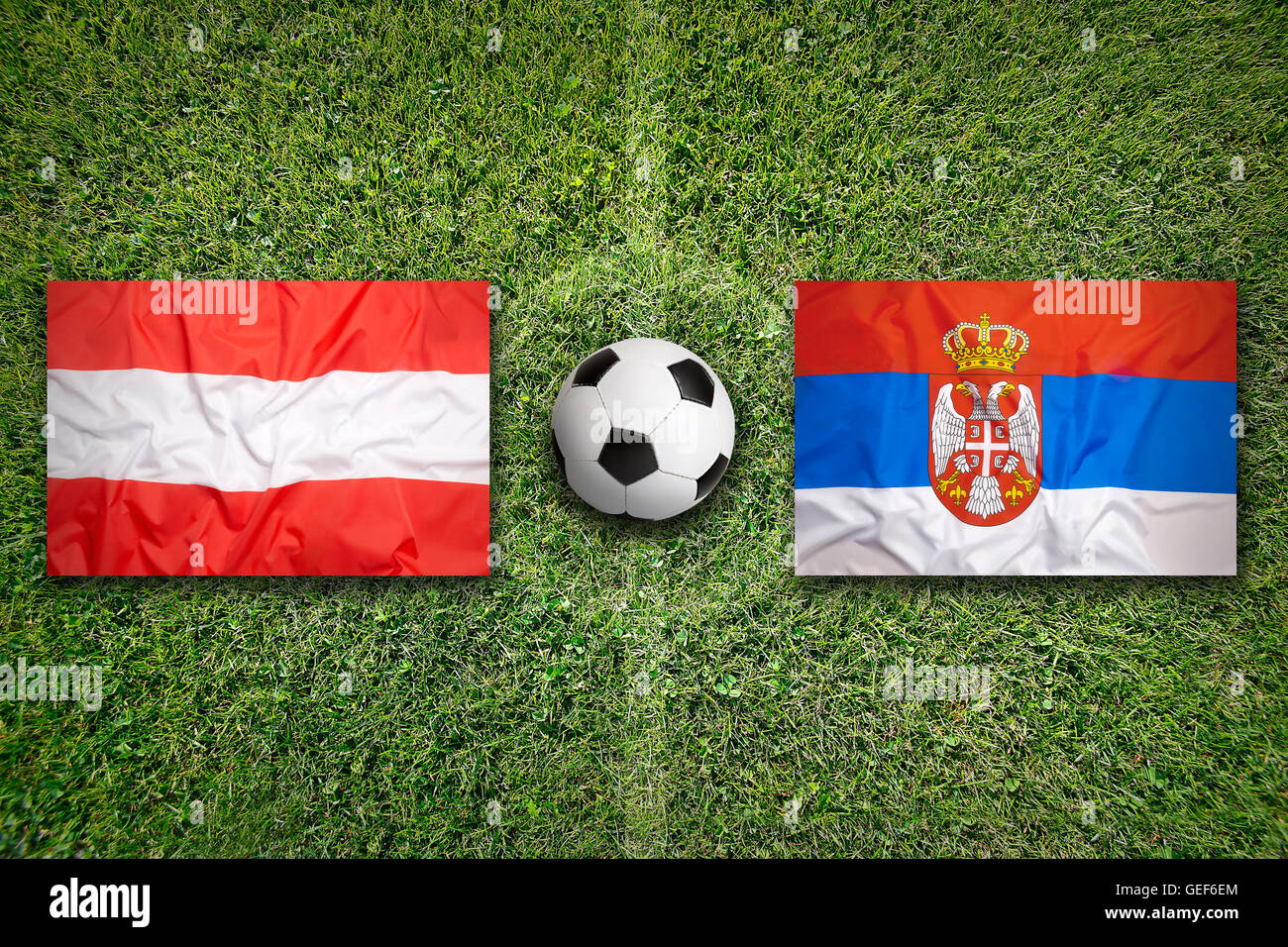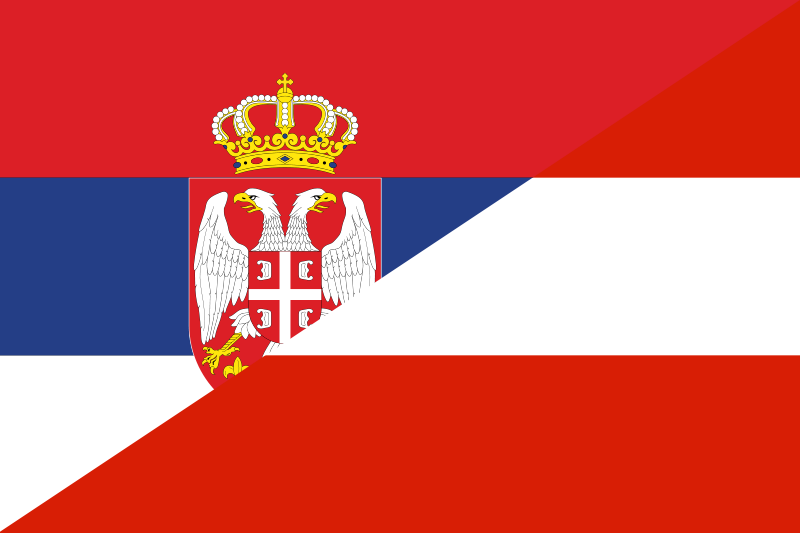When it comes to sports, political relations, and cultural exchanges, the rivalry between Serbia and Austria has always been a fascinating topic to explore. The history of their interactions spans centuries, influencing not only their domestic policies but also their global standing. This article delves deep into the Serbia vs Austria dynamic, examining key aspects such as historical events, sports rivalries, economic ties, and geopolitical influences.
The relationship between Serbia and Austria is complex, marked by periods of cooperation and conflict. From the Austro-Hungarian Empire's influence over the Balkans to modern-day diplomatic relations, this rivalry has shaped the identity of both nations. Understanding the historical context is crucial to appreciating the current state of affairs between these two countries.
In this article, we will explore various dimensions of the Serbia vs Austria rivalry, including political history, sports competitions, economic relations, and cultural exchanges. By the end of this comprehensive guide, readers will gain a deeper understanding of the intricate relationship between these two nations and how it continues to evolve in the modern world.
Read also:July 7 Zodiac Sign Unveiling The Secrets Of Cancer Born On This Day
Table of Contents
- Historical Background of Serbia vs Austria
- Sports Rivalry Between Serbia and Austria
- Economic Ties and Trade Relations
- Political Relations and Diplomacy
- Cultural Exchanges and Influences
- Military Conflicts and Alliances
- Geopolitical Impact on the Balkans
- Tourism Insights Between Serbia and Austria
- People and Society: Social Interactions
- Future Prospects and Predictions
Historical Background of Serbia vs Austria
The history of Serbia and Austria dates back to the medieval period, with significant events shaping their relationship over time. The Austro-Hungarian Empire's dominance in the Balkans during the 19th and early 20th centuries played a pivotal role in defining this rivalry.
Key Historical Events
- World War I: The assassination of Archduke Franz Ferdinand in Sarajevo by a Serbian nationalist sparked the beginning of World War I, leading to Austria-Hungary declaring war on Serbia.
- Yugoslav Independence: Following the collapse of the Austro-Hungarian Empire after World War I, Serbia became a part of the Kingdom of Serbs, Croats, and Slovenes, later renamed Yugoslavia.
- Cold War Era: During the Cold War, Yugoslavia, under Josip Broz Tito, maintained a neutral stance, while Austria was firmly aligned with Western powers.
These events have left lasting impressions on the political and social landscapes of both countries, influencing their interactions to this day.
Sports Rivalry Between Serbia and Austria
Sports have long been a battleground for Serbia vs Austria, with football, basketball, and tennis being the most prominent arenas of competition.
Football Rivalry
Football matches between the Serbian national team and Austria have always been fiercely contested. The passion and intensity displayed by both teams reflect the historical tensions between the two nations.
Basketball and Tennis
In basketball, both countries have produced world-class players who have competed at the highest levels. Similarly, in tennis, players like Novak Djokovic from Serbia and Dominic Thiem from Austria have engaged in thrilling encounters on the court.
Economic Ties and Trade Relations
Economic relations between Serbia and Austria have seen significant growth in recent years. Austria is one of Serbia's largest trading partners, with investments flowing in both directions.
Read also:Ellen Latzen Net Worth A Comprehensive Guide To Her Career And Achievements
Key Economic Sectors
- Automotive Industry: Austrian companies have invested heavily in Serbia's automotive sector, creating jobs and boosting the local economy.
- Financial Services: Austrian banks have a strong presence in Serbia, contributing to the development of financial infrastructure.
- Technology and Innovation: Collaborations in technology and innovation have opened new avenues for economic growth.
These economic ties are crucial for the development of both nations, fostering mutual benefits and cooperation.
Political Relations and Diplomacy
Political relations between Serbia and Austria have improved significantly in recent decades, with both countries working towards stronger diplomatic ties.
Diplomatic Achievements
- Bilateral Agreements: Numerous agreements have been signed to enhance cooperation in various fields, including education, science, and culture.
- EU Integration: Austria has supported Serbia's aspirations for European Union membership, recognizing the importance of regional stability.
Despite historical differences, the political landscape today is characterized by collaboration and mutual respect.
Cultural Exchanges and Influences
Cultural exchanges between Serbia and Austria have enriched both societies, promoting understanding and appreciation of each other's heritage.
Cultural Programs
- Art and Music: Joint art exhibitions and music festivals have brought together artists and musicians from both countries, fostering creativity and innovation.
- Language and Literature: Language exchange programs and literary collaborations have encouraged the sharing of ideas and stories.
These cultural exchanges play a vital role in bridging gaps and building lasting relationships between the people of Serbia and Austria.
Military Conflicts and Alliances
The military history between Serbia and Austria is marked by conflicts and alliances, reflecting the complex nature of their relationship.
Historical Conflicts
- World War I: As mentioned earlier, the assassination of Archduke Franz Ferdinand led to a devastating conflict that reshaped the region.
- World War II: During World War II, Austria was occupied by Nazi Germany, while Serbia was part of Yugoslavia, experiencing its own struggles under occupation.
Today, both countries are committed to peace and stability, working together to prevent future conflicts.
Geopolitical Impact on the Balkans
The Serbia vs Austria dynamic has had a profound impact on the Balkan region, influencing political, economic, and social developments.
Regional Stability
- Peacekeeping Efforts: Both countries have contributed to peacekeeping missions in the Balkans, promoting stability and security.
- Regional Cooperation: Initiatives aimed at enhancing regional cooperation have helped address common challenges faced by Balkan nations.
The geopolitical landscape of the Balkans continues to evolve, with Serbia and Austria playing important roles in shaping the future of the region.
Tourism Insights Between Serbia and Austria
Tourism has become an increasingly important aspect of Serbia vs Austria relations, with both countries attracting visitors from each other's nations.
Popular Destinations
- Belgrade: The vibrant capital of Serbia offers a rich cultural experience, with historical landmarks and modern attractions.
- Vienna: Known for its stunning architecture and world-class museums, Vienna is a must-visit destination for tourists from Serbia.
Tourism not only boosts the economies of both countries but also fosters cultural understanding and friendship among their citizens.
People and Society: Social Interactions
The people of Serbia and Austria have developed strong social ties over the years, with interactions spanning various aspects of life.
Social Programs
- Education: Exchange programs for students and teachers have enhanced educational opportunities and cross-cultural learning.
- Community Initiatives: Joint community projects have addressed social issues and promoted inclusivity and diversity.
These social interactions contribute to a more harmonious and interconnected society.
Future Prospects and Predictions
Looking ahead, the relationship between Serbia and Austria is poised to strengthen further, with opportunities for collaboration in various fields.
Predictions
- Increased Trade: As economic ties continue to grow, trade volumes are expected to rise, benefiting both nations.
- Enhanced Cooperation: Diplomatic efforts will likely lead to more agreements and initiatives aimed at fostering regional stability.
The future holds promise for Serbia and Austria as they work together to address global challenges and seize new opportunities.
Conclusion
In conclusion, the Serbia vs Austria rivalry is a multifaceted relationship shaped by history, politics, economics, and culture. From historical conflicts to modern-day collaborations, the interactions between these two nations have been dynamic and evolving.
We invite readers to share their thoughts and insights in the comments section below. Additionally, consider exploring other articles on our site to gain a broader understanding of international relations and global dynamics.
Thank you for reading, and we hope this article has provided valuable insights into the Serbia vs Austria relationship.


